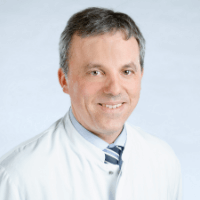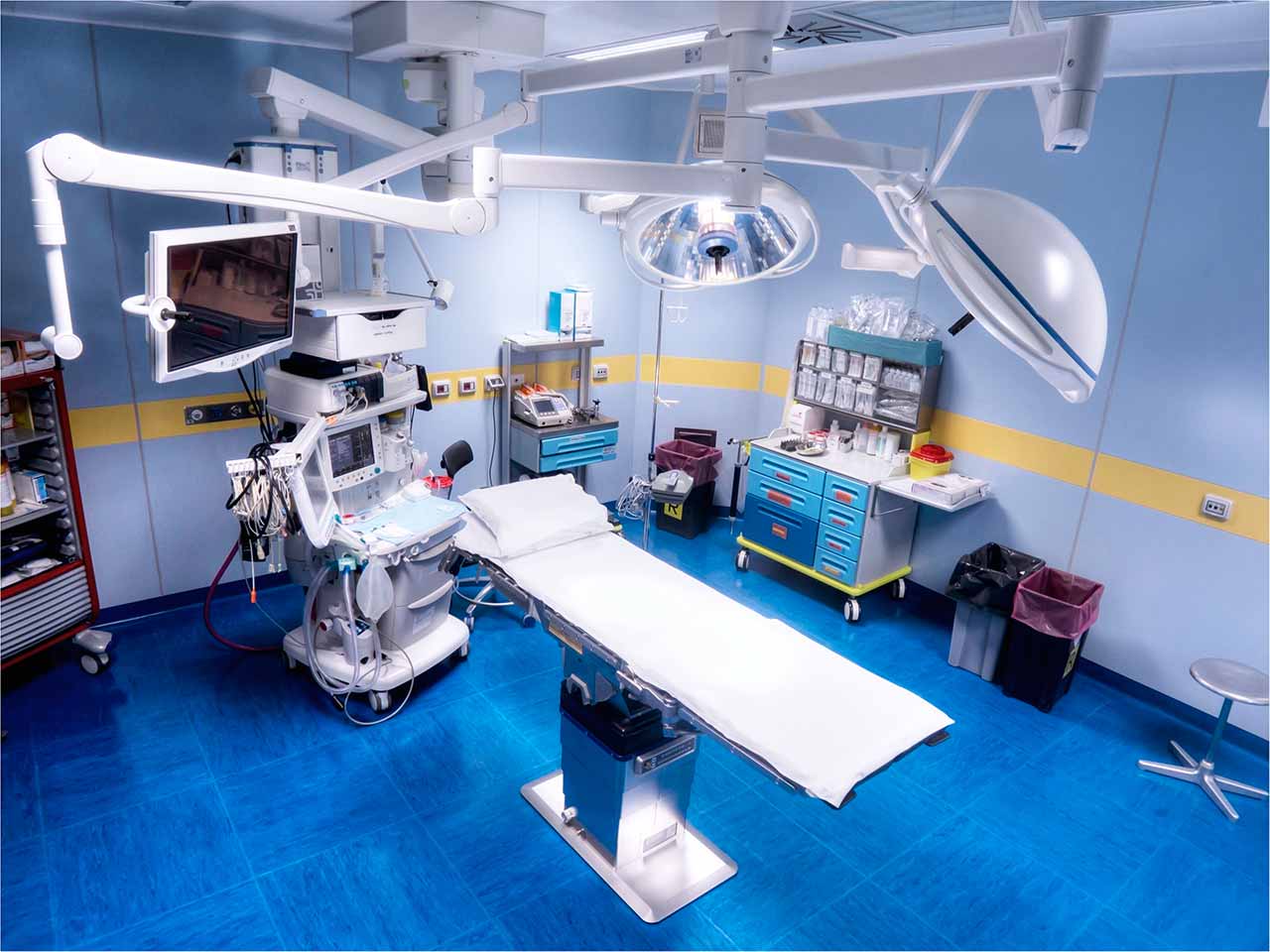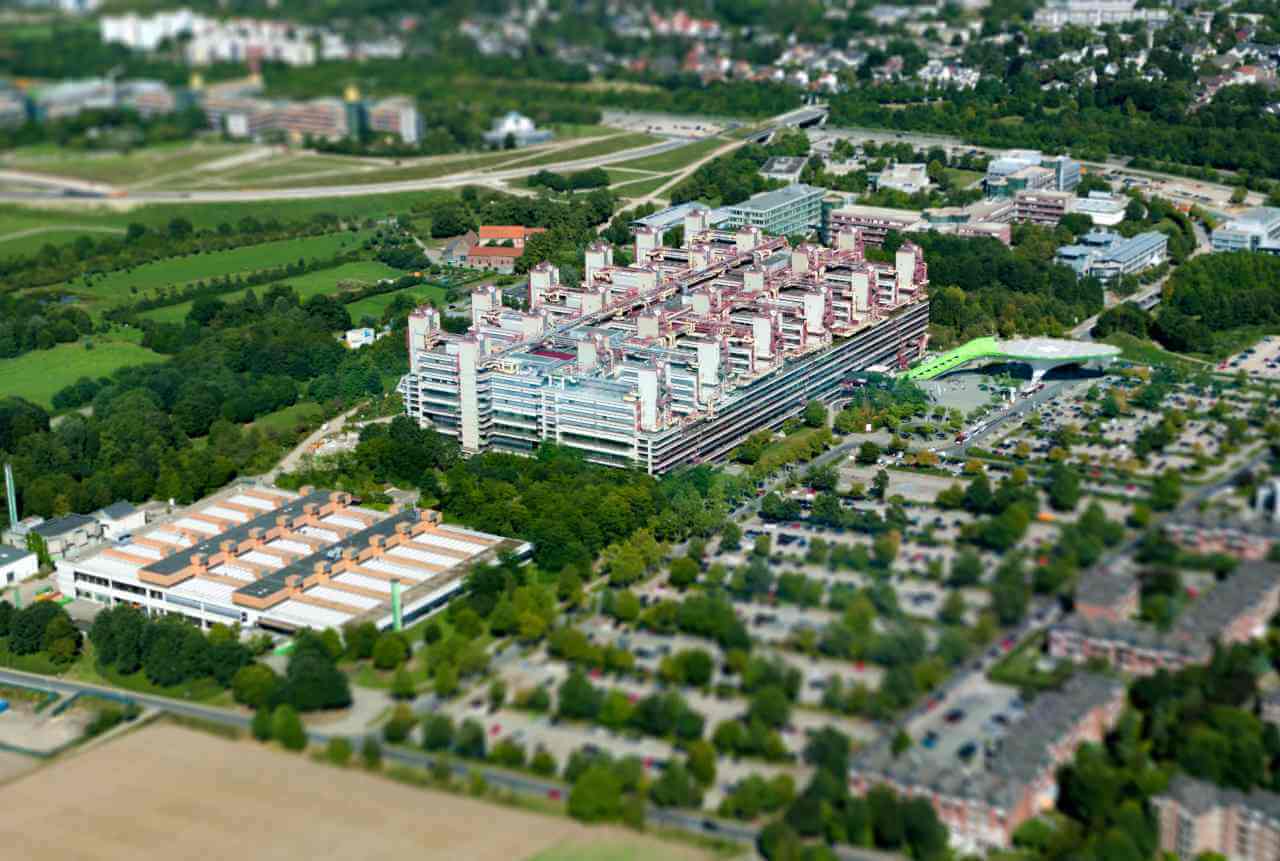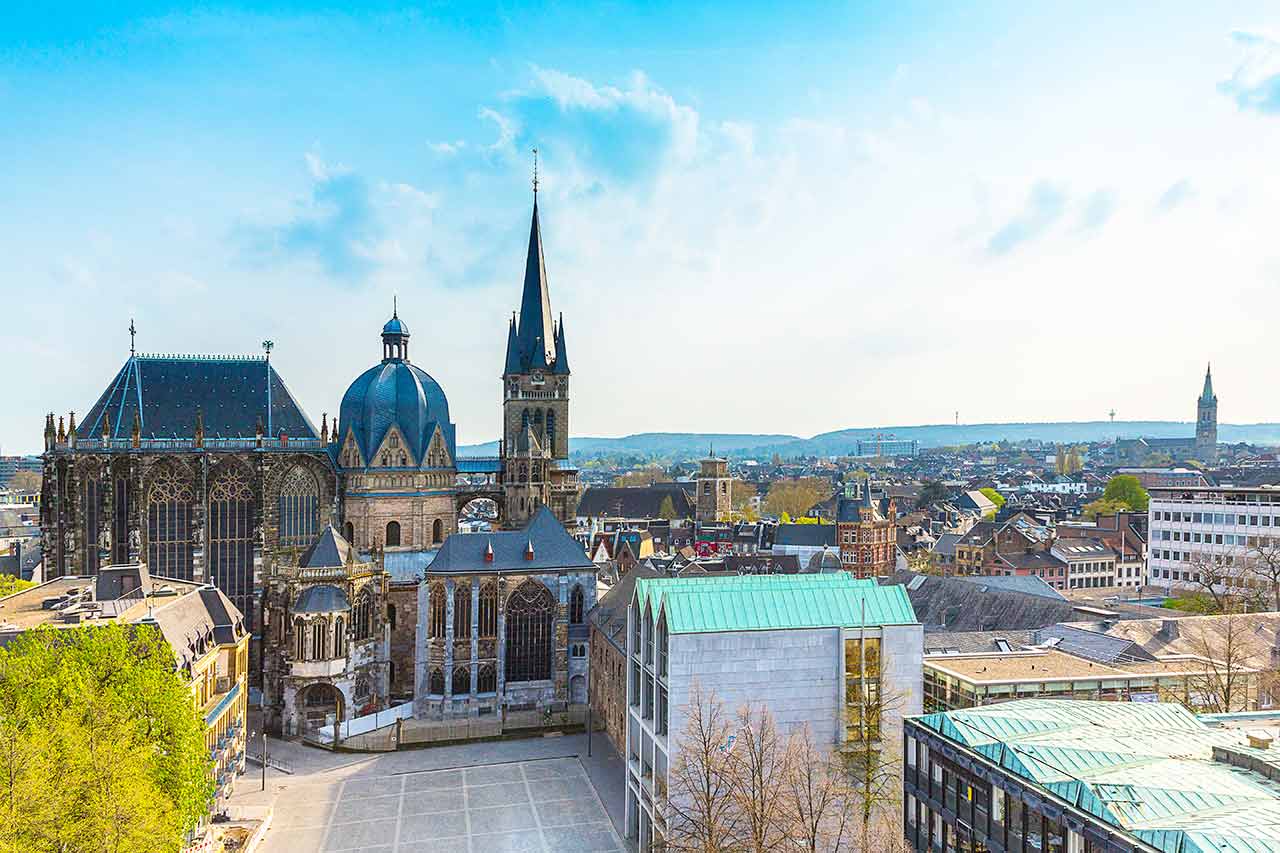
The program includes:
- Initial presentation in the clinic
- clinical history taking
- physical examination
- review of medical records
- laboratory tests:
- complete blood count
- general urine analysis
- biochemical analysis of blood
- indicators of inflammation (CRP, ESR)
- indicators blood coagulation
- x-ray examination of the hip
- MRI scan of the hip
- preoperative care
- hip replacement (hip endoprosthesis)
- symptomatic treatment
- control examinations
- physiotherapeutic procedures
- orthopedic appliances
- the cost of essential medicines and materials
- nursing services
- full hospital accommodation
- explanation of future recommendations
The program includes orthopedic rehabilitation:
- Primary presentation in the clinic
- medical history, including family history
- complex neurological and orthopedic examinations
- X-ray examination
- complex neurophysiological examinations
- individual rehabilitation program, which includes:
- Wii Fit training in the use of the balance
- neuropsychological therapy
- functional therapy of the upper extremities (ArmeoSpring)
- kinesitherapy (physiotherapy)
- biocontrol with feedback
- healing deep muscle massage
- acupuncture of spasticity and pain syndromes
- occupational therapy
- psycho-educational classes
- Individual physiotherapy
- microcurrent treatment
- fangotherapy / cryotherapy
- antispasmodic drug therapy
- mobilization of limb joints
- hydrotherapy / massage therapy / reflexology
- training on special trainers
- and etc.
- nurses care
- stay in the hospital with full board
- symptomatic and drug therapy
How program is carried out
Preliminary preparation for hip replacement includes quitting smoking and drinking alcohol; cancelling non-steroidal anti-inflammatory drugs (diclofenac, ibuprofen); cancelling anticoagulants (warfarin); normalization of body mass, if possible.
Preoperative examination, including consultation with an anesthesiologist and necessary related specialists, takes 1-2 days. According to its results, the most suitable endoprosthesis is selected.
Hip replacement. The operation is performed under general anesthesia. The patient lies on his side, the affected leg is bent and fixed in this position. The surgeon makes an incision 15-20 cm long, minimally traumatizing the muscles and nerve endings. Through this incision, miniature instruments are inserted to remove the damaged joint structures. Healthy bone is adjusted for further reliable implant fixation.
The surgeon installs a femoral stem in the center of the upper part of the femur. Ball-shaped head of the joint is fixed on it. The surgeon also implants a special liner that facilitates movement of the leg and protects the structures of the prosthesis. After the primary fixation of the prosthesis components, the doctor assesses the joint range of motion, as well as the length and symmetry of the lower limb.
The implant is fixed with cement or cementless method. The doctor treats the operating field with antiseptics, conducts its final revision and sutures the wound layer by layer. A temporary drainage is installed in the joint, and a bandage is applied on top.
Postoperative care. During the first day after the intervention the patient stays in the intensive care unit, under round-the-clock medical supervision. After that, with a smooth course of the postoperative period, the patient is transferred to a regular ward and the drains are removed. The range of motion expands gradually, from light toes movements to walking. Walking with the use of walking aids is allowed in 3-5 days after the operation.
Rehabilitation. The rehabilitation program begins after the transfer of the patient from the intensive care unit to a regular ward. It includes physical activity (from exercises in bed in the early days to exercises in the gym), physiotherapy, massage (including lymphatic drainage), exercises in the water. The rehabilitation program is constantly being adjusted according to the needs of the patient.
Required documents
- X-ray examination of the hip joints
- MRI scan of the hip joints, if available
Service
You may also book:
 BookingHealth Price from:
BookingHealth Price from:
About the department
According to the Focus magazine, the Department of Adult and Pediatric Orthopedics University Hospital RWTH Aachen ranks among the top German medical facilities specializing in joint replacement surgery!
The department offers the full range of diagnostics and treatment for patients with musculoskeletal diseases. The department treats patients of all age groups ranging from young children to elderly people. The department annually treats more than 15,000 patients, and also performs about 1,500 interventions yearly. The department has long traditions, long successful clinical experience, which contributes to its reputable status in the medical arena. The department is headed by Prof. Dr. med. Markus Tingart.
One of the department's key activities is joint surgery and endoprosthetics, including revision interventions. With the support of the German Society for Orthopedics and Orthopedic Surgery, the department received the status of the Maximum Care Center for Endoprosthetics. The knee replacement surgery is carried out using cutting-edge navigation systems, which helps to achieve the optimal placement of the prosthesis shaft towards the acetabulum. Thus, the doctors provide excellent prosthesis functionality and reduce the risk of wear. Also, minimally invasive replacement techniques are widely used in the department, which help to ensure minimal traumatisation and quickest recovery of the patients. The department has all the options for high-precision diagnostics (CT, MRI) for the manufacture of individually designed prostheses.
Another priority focus of the department's work is the treatment of musculoskeletal cancers. The department's specialists have high competence and long experience in the diagnostics and treatment of bone and soft tissue tumors. The entire range of modern conservative and surgical treatment of tumors is available here. The treatment is provided in close cooperation with the Euregional Comprehensive Cancer Center Aachen.
The department also has unique experience in the treatment of orthopedic diseases in children. The doctors mostly have to deal with the treatment of congenital malformations, foot deformities and hip dysplasia. The department also treats congenital clubfoot using Ponseti method and corrects axial deformities of the lower limbs (using minimally invasive techniques). In addition, the spectrum is complemented by the treatment of neuro-orthopedic diseases.
The service range of the department includes:
- Joint surgery, endoprosthetics, revision interventions
- Sports orthopedics and arthroscopic surgery
- Shoulder and shoulder joint diseases
- Shoulder impingement syndrome
- Forearm calcification
- Shoulder dislocation
- Knee diseases
- Cruciate ligament injuries
- Meniscus injuries
- Osteochondritis dissecans
- Patellar luxation
- Shoulder and shoulder joint diseases
- Conservative and surgical treatment of spinal diseases
- Scoliosis
- Spondylodiscitis
- Spinal disc herniation
- Spinal canal stenosis
- Pediatric orthopedics
- Hip dysplasia and hip dislocation
- Perthes disease
- Slipped capital femoral epiphysis
- Scoliosis
- Axial deformities of the lower limbs and lower limb discrepancy
- Infantile cerebral paralysis
- Clubfoot
- Hallux valgus
- Flat feet
- Treatment of osteoporosis and other pathological changes in musculoskeletal system
- Conservative and surgical treatment of musculoskeletal cancers
- Foot surgery
- Hallux valgus
- Ankle osteochondritis dissecans
- Achillodynia
- Heel spur
- Other medical services
Curriculum vitae
Education
- 10.1989 - 11.1995 Study of Human Medicine, Rhine-Westphalian Technical Aachen University (Leerss Foundation Scholarship)
- 07.1995 First Stage of the United States Medical Licensing Examination.
- 11.1996 Doctoral thesis defense.
- 03.1996 Second Stage of the United States Medical Licensing Examination.
- 09.1997 Admission to medical practice.
Professional Сareer
- 03.1996 - 08.1997 Intern, Department of Orthopedics at the University Hospital Cologne.
- 09.1997 - 03.2000 Assistant Physician, Department of Surgery II, University of Cologne.
- 09.1998 Theoretical Basis of the Specialty, Emergency Medical Care.
- 10.1999 Theoretical Basis of the Specialty, Radiation Protection: Emergency and X-ray Diagnostics of the Entire Skeleton.
- 04.2000 - 09.2001 Scholarship Program of the German Research Foundation, Harvard Medical School, Department of Orthopedic Surgery, Boston, USA.
- 12.2001 - 02.2004 Assistant Physician, Department of Orthopedics, University Hospital Regensburg.
- 02.2004 Board certification in Orthopedics.
- 11.2004 Additional specialization in Sports Medicine.
- 12.2004 Habilitation in Orthopedics, Faculty of Medicine, University of Regensburg.
- 01.2005 Additional specialization in Chiropractic.
- 02.2005 Board certification in Orthopedics and Traumatology.
- 04.2005 Venia legendi in Orthopedics, University of Regensburg.
- 01.2005 - 12.2005 Senior Physician, Department of Orthopedics, University Hospital Regensburg.
- 11.2005 Additional qualification in Rheumatology.
- 12.2005 Additional qualification in Physiotherapy.
- 01.2006 - 09.2010 Senior Physician and Deputy Head of the Department of Orthopedics at the University Hospital Regensburg.
- 03.2008 Optional training in Orthopedic Surgery.
- 05.2009 Additional qualification in Physiotherapy and Balneology.
- Since 10.2010 Head of the Department of Adult and Pediatric Orthopedics University Hospital RWTH Aachen.
Scientific Awards, Scholarships and Honors
- 07.2000 Clinical Grant, Orthopedic Research Laboratories Alumni Council, University of Pittsburgh, USA.
- 05.2006 Shoulder Fellowship, Working Group on Arthroscopy.
- 12.2006 Scientific Prize of the Working Group on Replacement Surgery.
- 02.2007 Austrian-Swiss-German Scholarship, German Society of Orthopedics and Orthopedic Surgery.
- 12.2007 Grant for Study Abroad, Working on Group on Joint Replacement Surgery.
- 06.2008 Albert Hoffa Prize of the North German Orthopedic Association.
- 03.2009 University Competition, Year of Science 2009, Federal Ministry of Education and Research.
- 10.2009 Themistokles Gluck Prize.
- 10.2011 Themistokles Gluck Prize.
Membership in Professional Societies
- German-speaking Working Group on Arthroscopy (AGA).
- Orthopedic Research Society (ORS).
- German Society for Orthopedics and Trauma (DGOOC).
- German Orthopedic Foot and Ankle Society (DAF).
- Working Group 16 (AK 16) of the German Society for Orthopedics and Orthopedic Surgery, Navigation Surgery.
- Working Group on Computerized Surgery of the German Society of Arthroplasty.
Photo of the doctor: (c) Uniklinik RWTH Aachen
About hospital
According to the prestigious Focus magazine, the University Hospital RWTH Aachen ranks among the top German hospitals!
As a maximum care university medical facility, the hospital guarantees patients first-class medical services combined with a respectful and human attitude. The hospital integrates all the modern options for the accurate diagnostics, effective therapy and productive research activities within one specialized center.
The hospital has more than 60 departments, institutes and interdisciplinary centers. A competent team of professionals, consisting of more than 7,000 employees (more than 940 doctors, including about 95 professors), takes care of the patients' health. In addition, multidisciplinary teams of nurses, physiotherapists, as well as medical and technical staff are available here. The patients and respectful attitude to their social, cultural and religious affiliations are at the center of all employees' efforts.
The cornerstone of the successful clinical practice is the innovative technical base. The hospital offers the most advanced diagnostic and therapeutic equipment. Thus, the hospital has all the resources in order to provide top-class medical services.
Photo: (с) depositphotos
Accommodation in hospital
Patients rooms
The patients of the University Hospital RWTH Aachen live in comfortable single and double rooms. All patient rooms are designed with large windows, so one can enjoy a beautiful landscape view. Each patient room has an ensuite bathroom. The standard room furnishing includes an automatically adjustable bed, a bedside table, a spacious wardrobe, a TV, a radio and a telephone. Also, there is Wi-Fi access.
Meals and Menus
The patient and his accompanying person have a daily choice of three menus. If for any reason you do not eat all the foods, you will be offered an individual menu. Please inform the medical staff about your dietary preferences prior to the treatment.
Further details
Standard rooms include:
Religion
Religious services are available upon request.
Accompanying person
During the inpatient program, an accompanying person may stay with you in a patient room or at the hotel of your choice.
Hotel
During the outpatient program, you can live at a hotel of your choice. Managers will help you to choose the most suitable options.
The hospital offers a full range of laboratory tests (general, hormonal, tests for infections, antibodies, tumor markers, etc.), genetic tests, various modifications of ultrasound scans, CT scans, MRI and PET / CT, angiography, myelography, biopsy and other examinations. Treatment with medications, endoscopic and robotic operations, stereotaxic interventions is carried out here, modern types of radiation therapy are also used. The hospital offers patients all the necessary therapeutic techniques.
- Embolization of tumors and vascular malformations
- Aortic surgery, including in children
- Radiosurgical interventions in the head and body region
- Cochlear implantation
- Treatment of all types of sports injuries
These are pathologies of the brain and spinal cord, benign and malignant tumors of various localizations, congenital and acquired heart defects, joint pathologies, stroke, neurodegenerative diseases, eye injuries, inflammatory skin diseases, allergies and other pathologies.
- Oncology (EU Regional Center for Comprehensive Cancer Care Aachen)
- Pediatric cardiac surgery
- General and abdominal surgery
- Plastic and burn surgery
- Pediatric and adolescent medicine
Over 940 highly qualified doctors work at the hospital.





